
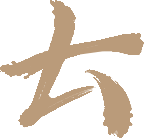



Traditional Chinese Medicine Encyclopedia
Honeysuckle
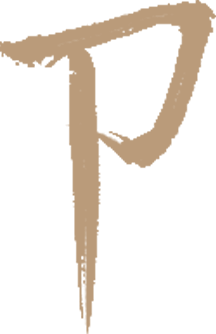

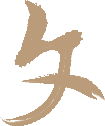

·Honeysuckle·
Category
Clearing Heat Herbs – Heat-Clearing and Detoxifying Herbs
Source
It consists of the dried flower buds or newly opened flowers of the plants from the Caprifoliaceae family, including Lonicera japonica Thunb., L. hypoglauca Miq., L. confusa DC., or L. dasystyla Rehd.
Related Names
Rén Dōng Huā (忍冬花) (“Honeysuckle Flower”), Yín Huā (银花) (“Silver Flower”), Lù Cè Huā (鹭鸶花) (“Heron Flower”), Sū Huā (苏花) (“Su Flower”), Jīn Huā (金花) (“Golden Flower”), Jīn Téng Huā (金藤花) (“Golden Vine Flower”), Shuāng Huā (双花) (“Double Flower”), Shuāng Bāo Huā (双苞花) (“Double Bract Flower”), Èr Huā (二花) (“Two Flowers”), Èr Bǎo Huā (二宝花) (“Two Treasure Flower”).
Habitat and Growth Environment
It grows by streams, in open fields, under sparse forests, or in shrubs. It is found in Sichuan, Guangdong, Guangxi, Hunan, Guizhou, and Yunnan.
Harvesting and Processing
In May to June, the flower buds are picked on sunny mornings after the dew has dried, then spread out to dry in the shade, ensuring to turn them frequently to prevent blackening. Avoid direct sunlight. Store in a dry, ventilated place to prevent insect infestation and discoloration.
Properties and Channels
Sweet, cold. Enters the Lung (肺), Heart (心), and Stomach (胃) channels.
Functions
Clears heat and detoxifies. Treats febrile diseases, heat-toxicity causing dysentery, abscesses, swellings, scrofula, and hemorrhoids.
1. Diān Nán Běn Cǎo: “Clears heat, resolves various sores, abscesses, and scrofula.”
2. Shēng Cǎo Yào Xìng Bèi Yào: “Can dissipate abscesses and toxins, stop dysentery, wash sores, and eliminate blood heat from the skin.”
3. Běn Cǎo Bèi Yào: “Nourishes blood and quenches thirst. Treats scabies and eczema.”
4. Chóng Qì Táng Suí Bǐ: “Clears wind-heat dampness, resolves epidemic toxins, calms liver and gallbladder wind, treats convulsions and epilepsy.”
5. Guǎngzhōu Bùduì Cháng Yòng Zhōng Cǎo Yào Shǒucè: “Clears heat and detoxifies. Treats exterior heat with fever and cough, enteritis, bacterial dysentery, measles, mumps, septicemia, abscesses, appendicitis, external infections, and heat rash in children. Made into a cooling tea, it can prevent heatstroke, colds, and intestinal infectious diseases.”
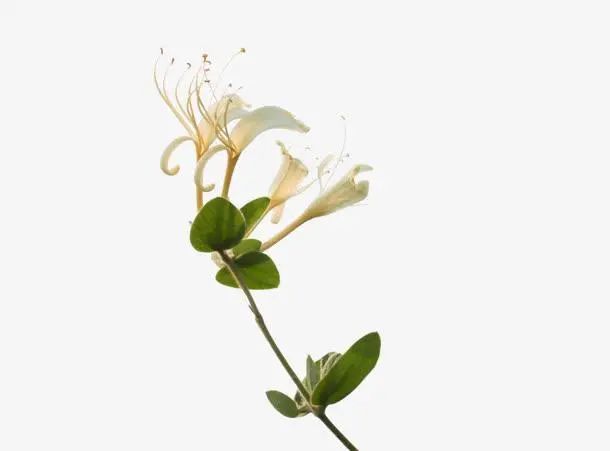
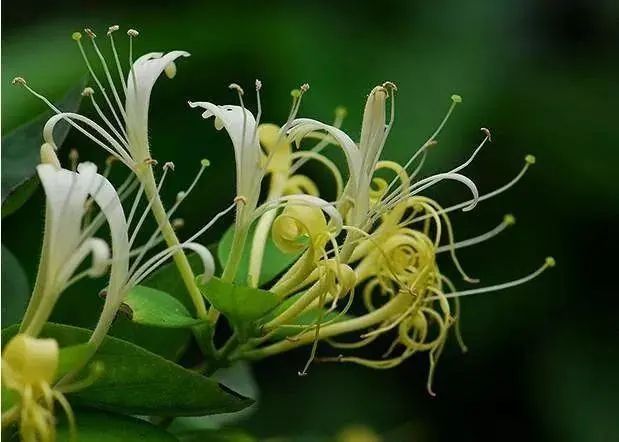
Preparation
Honeysuckle: Sift out sand and impurities.
Charred Honeysuckle: Take the cleaned honeysuckle, place it in a pot, and stir-fry over high heat until it turns dark brown, then spray with clean water, remove, and dry in the sun.
Applications
1. Abscesses and boils. This herb is sweet and cold, clears heat and detoxifies, disperses abscesses, and reduces swelling, making it essential for treating all internal and external abscesses. For initial stages of abscesses with redness, swelling, and pain, it can be used alone in decoction and applied topically, or combined with Zào Jiǎo Cì (皂角刺), Chuān Shān Jiǎo (穿山甲), and Bái Zhǐ (白芷) as in Xiān Fāng Huó Mìng Yǐn (《妇人大全良方》); for treating carbuncles and deep-rooted swellings, it is often combined with Zǐ Huā Dì Dīng (紫花地丁), Pú Gōng Yīng (蒲公英), and Yě Jú Huā (野菊花) as in Wǔ Wèi Xiāo Dú Yǐn (《医宗金鉴》); for treating intestinal abscesses and abdominal pain, it is commonly combined with Dāng Guī (当归), Dì Yú (地榆), and Huáng Qín (黄芩) as in Qīng Cháng Yǐn (《辨证录》); for treating lung abscesses with cough and expectoration of pus and blood, it is often combined with Yú Xīng Cǎo (鱼腥草), Lú Gēn (芦根), and Táo Rén (桃仁) to clear the lungs and expel pus.
2. Exterior wind-heat and initial stages of warm diseases. This herb is sweet and cold, aromatic, and disperses lung channel heat pathogens, reaching the surface. It is often combined with Lián Qiáo (连翘), Bò Hé (薄荷), and Niú Bàng Zǐ (牛蒡子) to treat exterior wind-heat or initial warm diseases with fever, headache, sore throat, and thirst, as in Yín Qiáo Sǎn (《温病条辨》); this herb also clears heart and stomach heat toxins, has the ability to transform heat and promote qi, and when combined with Shuǐ Niú Jiǎo (水牛角), Shēng Dì (生地), and Huáng Lián (黄连), it can treat heat entering the nutrient and blood levels, with symptoms of a red tongue, delirium, and irritability, as in Qīng Yíng Tāng (《温病条辨》); if used with Xiāng Rú (香薷), Hòu Pò (厚朴), and Lián Qiáo, it can also treat summer heat with fever, thirst, headache, and no sweating, as in Xīn Jiā Xiāng Rú Yǐn (《温病条辨》).
3. Heat-toxicity dysentery. This herb is sweet and cold, has heat-clearing and detoxifying, cooling blood, and stopping dysentery effects, thus commonly used to treat heat-toxicity dysentery with purulent blood diarrhea, which can be effectively treated with a concentrated decoction alone; it can also be combined with Huáng Qín (黄芩), Huáng Lián (黄连), and Bái Tóu Wēng (白头翁) to enhance the effect of stopping dysentery.
Additionally, it can be used to treat sore throat, children’s heat sores, and heat rash.
Summary from Ancient Texts
1. Běn Cǎo Shí Yí: “Indicated for heat-toxicity, blood dysentery, and watery dysentery; decoct and take.”
2. Běn Cǎo Gāng Mù: “For all wind, dampness, and various swellings, toxins, abscesses, scabies, and other evil sores. Disperses heat and detoxifies.”
3. Běn Jīng Féng Yuán: “Honeysuckle, detoxifies and expels pus, has both purging and tonifying properties, a holy medicine for abscesses and sores. However, those with qi deficiency and clear pus, with little appetite and diarrhea should not use it.”
Precautions
Should not be used in cases of spleen and stomach deficiency-cold and qi deficiency with clear pus.
Morphological Characteristics
Rén Dōng: Appears rod-shaped, thicker at the top and thinner at the bottom, slightly curved, 2-3 cm long, with a diameter of about 3 mm at the top and about 1.5 mm at the bottom. The surface is yellowish-white or greenish-white (darkening with prolonged storage), densely covered with short soft hairs. Occasionally, leaf-like bracts are seen. The calyx is green, with 5 lobes at the tip, and the lobes are hairy, about 2 mm long. The open flower has a tubular corolla, with a two-lipped shape at the tip; there are 5 stamens attached to the tube wall, yellow; and 1 pistil, with a hairless ovary. It has a clear fragrance and a mild, slightly bitter taste.
Hóng Xiàn Rén Dōng: 2.5-4.5 cm long, 0.8-2 mm in diameter. The surface is yellowish-white to yellow-brown, hairless or sparsely hairy. The calyx tube is hairless, with 5 lobes at the tip, and the lobes are triangular and hairy. The open flower has a reversed lower lip. The flower column is hairless.
Shān Yín Huā: 1.6-3.5 cm long, 0.5-2 mm in diameter. The calyx tube and corolla are densely covered with grayish-white hairs, and the ovary is hairy.
Máo Huā Zhù Rén Dōng: 2.5-4 cm long, 1-2.5 mm in diameter. The surface is light yellow with a slight purple hue, hairless. The calyx lobes are short and triangular. The open flower has an irregular upper lip, and the flower column is often densely covered with long soft hairs.
Identification Characteristics
Dry flower buds are long and rod-shaped, slightly curved, about 2-3 cm long, thicker at the top, with a diameter of about 1.5-3 mm. The exterior is yellow or yellow-brown, covered with short soft hairs and glandular hairs. At the base, there are small green calyxes, 5-lobed, with triangular lobes, hairless. When the flower bud is split open, 5 stamens and 1 pistil can be seen. The corolla is lip-shaped, with the stamens and pistil protruding like whiskers. It has a fragrant aroma and a slightly bitter taste. The best quality is from unopened flowers, yellowish-white, and plump.
Notes
Additionally, the flower buds of the following related plants are also used as honeysuckle in some regions:
1. Shān Yín Huā, also known as “Tǔ Yín Huā”. Its main characteristic is that the calyx tube is covered with soft hairs, and the ovary is hairy. Found in Guangdong, Guangxi, Yunnan, etc. The plant morphology is detailed in the “Tǔ Yín Huā Yè” section.
2. Xiàn Yè Rén Dōng, with obvious short soft hairs on the branches; the leaves are paper-like, with slightly raised net veins on the underside. Found in Hunan, Guangdong, Guangxi, etc.
3. Máo Huā Zhù Rén Dōng, with the flower column being more or less hairy. Found in Guangxi.
4. Xì Bāo Rén Dōng, also known as “Yán Yín Huā”. The underside of the leaves is densely covered with white short soft hairs. The flower clusters are terminal; the flowers are longer; the bracts are conical, with a weaker fragrance. Found in Sichuan, Yunnan, Guangxi, Hunan, etc.
5. Dù Zi Yín Huā, with old leaves being smooth and hairless on the underside. The flowers grow in pairs in the leaf axils, with terminal flower clusters; the flowers are shorter, purplish-red, and have a very faint fragrance. Found in Sichuan.
6. Guāng Guàn Yín Huā and Xiǎo Yè Jīn Yín Huā, found in Tibet.
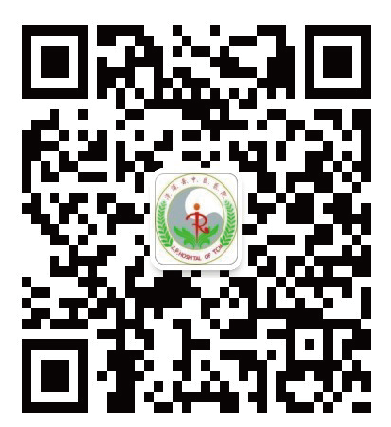
Zhāng Pǔ Xiàn Zhōng Yī Yī Yuàn
Hòu Dé Jīng Shù Chéng Gǔ Nà Xīn
WeChat Official Account ID: zzszpxzyy

